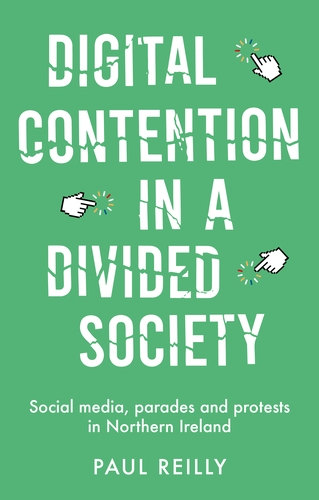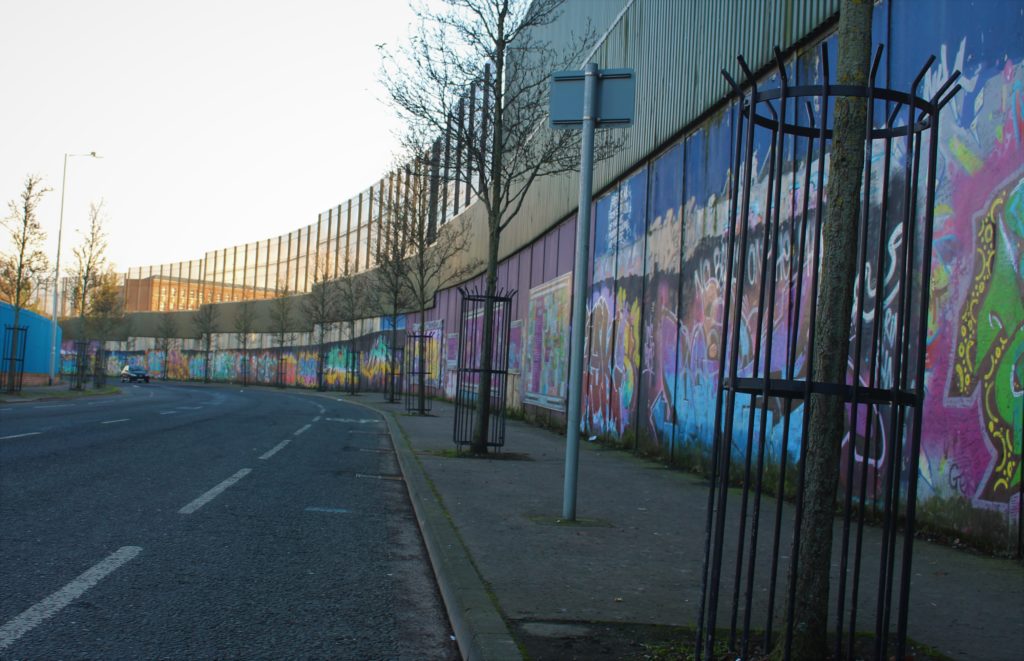Like many people who grew up in Northern Ireland, Paul Reilly always followed the news, especially as the peace process emerged during the mid-1990s. His interest grew during his studies at St Andrews University in Scotland. Researching the relationship between the internet and terrorism, he discovered how loyalist and republican websites not only voiced their opposition to the Good Friday Agreement but also appeared to be inciting violence.
As time went on, websites were increasingly used for ‘politics as usual’ in Northern Ireland. According to Paul, both critics and supporters of the peace process have used their web presence “to talk past each other, rather than to each other.”
Today Paul is a Senior Lecturer in Social Media & Digital Society at the University of Sheffield. In January, he will release his second book, entitled Digital Contention in a Divided Society: Social Media, Parades and Protests in Northern Ireland.
I spoke to Paul about his upcoming book, what role social media has played in a changing NI, and the lessons from our experience that could be imparted elsewhere.

The Troubles and the Good Friday Agreement occurred long before social media came along. What impact do you think the internet and social media has had on politics and community relations in NI?
I think it’s been something of a mixed bag. When I first began researching this area during the mid-2000s [during a PhD at Glasgow University] I would probably have been more pessimistic. I reviewed 55 websites run by NI political parties, community groups, and supporters of loyalist and republican paramilitaries. They were de facto ‘islands of political communication’. There was little opportunity for informal learning about the ‘other’ community. In [my first book] Framing the Troubles Online I concluded that the internet was likely to reinforce divisions between communities.
My latest book, Digital Contention in a Divided Society, focuses on how Facebook, Twitter and YouTube primarily were used during contentious parades and protests between 2012 and 2016. Unsurprisingly, there was an intensification of sectarian hate speech and threats of violence on social media during the prolonged loyalist protests of December 2012 [which followed Belfast City Council’s decision to fly the Union flag on designated days, as opposed to every day as had been the case previously]. The public Facebook page Loyalist Peaceful Protest Updater, for instance, was shut down for publishing threats against a Belfast resident.
Critics of the protests, most notably the self-styled parody group Loyalists Against Democracy, also engaged in vitriolic attacks towards protest spokespersons like Willie Frazer and Jamie Bryson. Online ‘shaming’ of loyalists for poor spelling and grammar in their social media posts was typical of the crude stereotyping of the ‘other’ during this period. This behaviour is unlikely to help address contentious issues; these situations require political leadership and respect for difference.
We have seen positive contributions to community relations, however, most notably in correcting misinformation which had potential to exacerbate tensions. We’ve also seen examples of informal learning, not only about the ‘other’ community but also around citizens’ rights such as the freedom of assembly. Social media also continues to create opportunities for contact between divided communities which simply were not possible previously.
We’ve seen social media platforms used in campaigns for social and political change which transcend ethno-sectarian boundaries. Love Equality NI which campaigned against the DUP’s repeated veto of introducing same-sex marriage is one example. Another is the group Now for NI, which highlighted the plight of women forced to travel to England, Scotland or Wales to access abortion services which were legally prohibited in Northern Ireland.
Perhaps the ultimate contribution of social media to consolidating peace in Northern Ireland is allowing younger citizens to mobilise in policy areas which transcend the tribal politics of the violent past.
In your latest book you argue that the 2012 loyalist flag protests marked a watershed moment in terms of citizens using digital media, especially to make claims around rights in Northern Ireland? What do you mean by this? How has this changed since then?
I think this was significant because it was the first time we saw such large numbers of people use social media to make themselves heard during contentious political events.
The flag protests marked the first time that people used online platforms to express and claim their rights. For loyalists this revolved around parading rights and their perception that these rights were being eroded by a ‘Sinn Féin/IRA’ culture war. For those who opposed the protests, there was a lot of anger at what they perceived as the PSNI facilitating illegal street demonstrations.
In Digital Contention I argue that these acts of digital citizenship can help or hinder peacebuilding in divided societies, depending on the context in which these rights claims are being made. While social media is no mirror for society, it is perhaps inevitable that contentious parades and protests would be contested in an antagonistic fashion online. At the same time, however, we should not exaggerate the impact of this activity upon ‘real-world events’. Online platforms typically provide spaces for people to contest and react, rather than directly shape events on the ground.

At Northern Slant, we’re keen to learn how new media can be used to forge a shared future in NI. Do you think social media is making NI a better place? How do you think we could use new media to tackle sectarian tensions and encourage better community relations?
I’m not sure I could say it has made NI a better place. The toxicity of political debates on social media over the past decade does little to help promote reconciliation, and often the most inflammatory and offensive content travels the furthest. Research still suggests that face-to face contact is the most effective way to bridge sectarian divides.
We also need to remember that social media is not a proxy for the whole population. Twitter, for example, was only used by approximately one in five of people over the age of 16 in NI in 2017. What’s often called ‘Northern Ireland Twitter’ – those politically active tweeters who tend to dominate political discussions about NI on the platform – would total a few hundred accounts at most. However, it’s fair to say that professional journalists are increasingly relying on social media for stories. This explains why Twitter often has a disproportionate influence on news media coverage of contentious political issues in NI.
Nevertheless, I’m more optimistic about the role of social media in NI politics than I was a few years ago. These sites have provided a platform for those who previously would have been overlooked by the mainstream media. People are more likely to be exposed to oppositional views online, whether this is accidental or incidental.
What lessons from your research of NI do you think could be learned elsewhere?
Firstly, in post-conflict societies we need political leaders to step up and address the issues that persistently divide communities, notably topics around legacy of the past which will only continue to polarise public opinion, both on and offline.
When it comes to contentious events, social media activity often follows events rather than shapes them. However, my research showed how platforms like Twitter can be used by citizens and journalists to correct misinformation in real time. This can be potentially significant in preventing tensions from rising and reducing the likelihood of violence.
We need to be wary of generalising opinions expressed on public social media platforms to the whole population. While it is true that online incivility can have indirect effects that harden divisions, we still need to treat posts and comments with a degree of caution as to their representativeness of broader opinion.
There is also frequently a heavy price paid by those who put their head above the parapet on social media. There have been too many threats of violence, incidents of hate speech and abuse directed at female politicians such as the Alliance Party leader Naomi Long when they have used their social media accounts to comment on contentious political issues.
In addition to the impact this can have on the individual under attack, these incidents act as barriers preventing women and other marginalised groups from expressing their political viewpoints on these platforms. While social media companies could clearly do more to tackle online harms, we all have a responsibility to ensure we are playing the ball, not the person when discussing political issues online.
Digital Contention in a Divided Society: Social Media, Parades and Protests in Northern Ireland will be published in January 2021. You can find out more about the book – and pre-order it – here.
